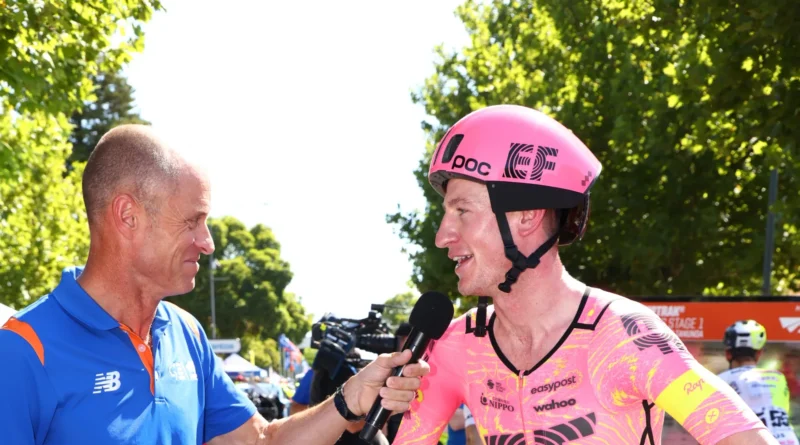POC’s New Helmet: Ears Aero Optimization
In the world of professional cycling, a sport where even the smallest aerodynamic advantage can mean the difference between victory and defeat, the latest innovation comes not from sleek bicycles or skin-tight suits but from a rather unexpected source: helmets that optimize ear aerodynamics. At the recent Tour Down Under, a prime event in the World Tour race calendar, this trend reached new heights with the debut of POC’s groundbreaking new helmet design.
This helmet, sported by EF-Education First – Easy Post’s Harry Sweeny, represents a pivotal shift in aerodynamic design. Following in the footsteps of Kask’s recent aero helmet reveal, which also featured ear-covering elements, POC’s latest model pushes the envelope further. The helmet’s design, reminiscent of a truncated time trial helmet, extends coverage to partially encase the rider’s ears, a move that’s as much about speed as it is about style.
In comparison to the full-face coverage of Specialized’s ‘Darth Vader-esque’ S-Works TT 5 helmet, POC’s design strikes a balance between extreme aerodynamics and practicality. Its side profile bears a strong resemblance to POC’s Procen time trial helmet, known for its triple front vent layout and aerodynamic shape. However, this new model sports a shorter front-to-rear profile, signaling a design evolution.
Aesthetically bold, this helmet doesn’t just stand out for its looks. Equipped with a visor akin to the Giro Vanquish helmet released in 2017, it reflects a growing trend in cycling gear where function meets fashion. But style aside, what truly sets this helmet apart is its aerodynamic efficiency, which could significantly impact a rider’s speed.
The aerodynamic design is not just about slicing through the air more effectively. It’s also about optimizing airflow to regulate temperature. POC’s Procen helmet, with its small front vents, creates a high-pressure airflow that accelerates around the rider’s head, thereby maintaining a lower core temperature while keeping the design aerodynamic. This technology, presumably incorporated into their new aero road helmet, represents a leap forward in helmet design.
Cyclists and enthusiasts keen on details like pricing and availability will have to wait, as POC, despite confirming the helmet’s role in the Tour Down Under, has remained tight-lipped about these specifics.
This development in helmet technology is a fascinating example of how innovation in sports gear can emerge from unexpected places. While bicycles and other gear often receive the lion’s share of attention, this focus on optimizing helmet aerodynamics, particularly ear coverage, underscores the sport’s ongoing evolution and the relentless pursuit of speed and efficiency. It’s a reminder that in competitive cycling, every detail counts, and advancements can come from rethinking even the most fundamental aspects of equipment design.
